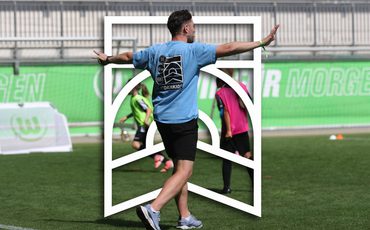Enhancing Youth Sport Participation in the EU
Rates, Motivations, Barriers and Ways Forward
Children’s physical activity levels and competence have dropped steadily and globally over the last two decades. This decrease has been exacerbated by the COVID-19 pandemic. Action is needed.
ICOACHKIDS+ is an Erasmus+ Sport co-funded project part of the overall activities of the ICOACHKIDS Global Movement. It aims to enhance sport participation and maximise sport’s health enhancing properties for children aged 13-18.
This report presents the findings of a unique series of two multi-country and multi-sport studies investigating the participation rates of children and young people in organised youth sport and the reasons why they stop taking part. Recommendations for all stakeholders follow.
The two studies are as follows:
Study 1 - Participation Trends in Organised Sport Across the EU
We collected 3 years’ worth of participation data for 5.5 million children across 27 countries and 18 sports.Key Findings:• Youth male sport participation rates are four times higher than females. • This trend, however, has a distinct sport-specific flavour with sports like football being played predominantly by boys (92%) and others like volleyball (73%) and dance sports (85%) being typically played by girls
Overall participation peaks for both boys and girls between 12 and 14 years of age after which there is a marked drop off. This trend is also sport and gender specific.
Male
Cycling 92% dropout (from U14 to U18) Swimming/Diving 75% dropout (from U8 to U18) Martial Arts 67% dropout (from U8 to U18)
Female
Swimming/Diving 71% dropout (from U8 to U18) Dance Sports 57% dropout (from U8-U16) Martial Arts 55% dropout (from U8 to U16) Interestingly, female participation in sports like skiing (55%) and boxing (86%) grows in the late teens.
The study also highlighted shortcomings in the way participation data collection is conducted by national sporting agencies and federations. This limits our capacity to fully understand young people’s journeys in organised sport. Creating standardised participant registration systems across multiple sports would facilitate real participation tracking and provide vital information.
These findings confirm that youth sport participation is a complex phenomenon with gender, age, and sport specific patterns that require further investigation. Our second study investigated the different factors that influence participation and attrition patterns.
Study 2 - Why do young people drop out of organised sport?
We developed a novel Youth Sport Dropout Questionnaire (YSDQ; Lara-Bercial et al., in preparation) containing 49 dropout reasons and gave it to 450 students in the UK.
General Trends
52% of young people drop out between 14-18 years of age.
39% took part for more than 5 years before dropping out.
70% saw themselves as sporty, yet still dropped out
To find out our conclusions and recommendations, you can download the full report below.
You can also download the executive summary by clicking the links for English, Spanish, French, Dutch, Hungarian and German
Downloads
Enhancing Youth Sport Participation in the EU
Comments
Related Pages


